

1.BALI
Shangri-La, Elysium, Arcadia, Utopia and Bali are all synonymous with "heaven." The only difference between them is that you can actually visit Bali. Many travelers have never been to this Indonesian island. Yet, the word "Bali" conjures daydreams of the most fantastical landscape: towering volcanoes wrapped in a deep green canopy, sandy shores that fade into turquoise waters and curving coastlines crowned with staggered pagodas. And believe it or not, Bali rarely disappoints.
You'll be amazed at how many different types of visitors revel in this paradise. The ordinary traveler simply stays at the palatial oceanfront resort and indulges in luxurious spa treatments, decadent cuisine and lazy sunbathing. But the historian will find his or her delights at the island's many temples while the adventurer will discover new paths up an active volcano in Kintamani. Plus, the town of Kutaboasts more riotous pleasures for those inclined to late nights. Bali is a dream come true, so wake up and book your ticket.

Bali Culture & Customs
Bali is a part of Indonesia; for this reason, the official (and dominant) language is Indonesian. However, you'll still hear Balinese (a Malayo-Polynesian language) being spoken by some locals. Because international tourism plays a key role in Bali's economy, English is widely spoken in larger towns and cities. That means you shouldn't have a problem getting around, purchasing souvenirs or ordering food.
The currency in Bali is the Indonesian rupiah. Since the rupiah to U.S. dollar exchange rate fluctuates, be sure to check what the current exchange rate is before you go. Also, keep in mind that because the large numerical difference can be confusing for foreigners, locals sometimes ask for unreasonable prices and can trick travelers into coughing up more cash than they need to.
In terms of religion, Bali is unique among the Indonesian islands, which are mostly Islamic. Hinduism is the predominant religion in Bali. Most of the temples found here are sacred Hindu sites, so be respectful of the customs you'll witness, such as praying in pools of water.
Bali Dining
Bali's cuisine scene is heavily Indonesian, with Chinese and Indian influences. Most dishes include rice, vegetables, meat and fish – and plenty of spice. Many meals feature base gede – a spice paste that usually consists of garlic, red chili peppers, shallots, nutmeg, turmeric, coriander, ginger, shrimp paste, coconut oil and bay leaves. With that many ingredients, you can be sure that dishes featuring this spice blend are flavorful. Fish, chicken and pork are often rubbed or stuffed with the spice paste, cooked with coconut milk and served with rice and veggies.
There are several standout dishes that travelers should sample. Orderbabi guling (suckling pig) and you'll get a plate of tender roasted meat that's also crispy and caramelized. Bebek betutu is a spice-rubbed, slow-roasted duck often cooked in banana leaves. The satay (or sate) in Bali includes strips of chicken, pork, fish or tofu placed on skewers and grilled over a hot flame; accompanying sauces vary, but peanut and shrimp paste-based sauces are common. When it comes to restaurants, experts and travelers recommend trying a variety. Many of the resorts feature upscale dining, the markets throughout Bali offer up fresh, local fare and the eateries along the coast dish out casual meals (with beautiful beach views).
SOME IMAGES:




2.Jakarta
One of the world’s greatest megalopolises, Jakarta is a dynamic city of daunting extremes that's developing at a pace that throws up challenges and surreal juxtapositions on every street corner. An organism unto itself, this is a town in the midst of a very public metamorphosis, and despite the maddening traffic, life here is lived at an all-out pace, driven by an industriousness and optimism that's palpable. Dysfunction be damned.
Translation: it's no oil painting, yet beneath the unappealing facade of new build high-rises, relentless concrete and gridlocked streets, fringed with rickety slums and shrouded in a persistent blanket of smog, Jakarta has many faces and plenty of surprises. Its citizens – even the poorest among them – are remarkably good-natured and positive, and compared to many of the world’s capitals, crime levels are low.
From the steamy, richly scented streets of Chinatown to North Jakarta's riotous, decadent nightlife, the city is filled with unexpected corners. Here it’s possible to rub shoulders with Indonesia’s future leaders, artists, thinkers, movers and shakers in a bohemian cafe or a sleek lounge bar and then go clubbing till dawn and beyond, the sober desires of current lawmakers notwithstanding.



3.Bandung
A city of punks and prayer, serious religion and serious coffee, almost everything great and terrible about Indonesia can be found in Bandung. Here are teeming markets and good shopping, thriving cafes in reclaimed Dutch relics, palpable warmth and camaraderie on street corners and mind-numbing, air-trashing traffic almost everywhere you look. You may cringe at the young teens smoking and systemic poverty, and nod with respect at the city's thriving and growing middle class. Yes, Bandung has everything, except nature, and after the bottle-green hills of Cibodas, the sprawling bulk of Bandung is quite the urban reality check. But even if the local mountains are cloaked in smog, the city does make a good base for daytrips to the surrounding countryside – high volcanic peaks, hot springs and tea plantations are all within reach.
Bandung has three distinct districts that interest visitors. The Jl Braga area offers a strip of cafes and restaurants and is surrounded by markets and museums. The Jl Cihampelas district, or so-called Jeans Street area, offers discount retail and plenty of nibbles and hotels too, but the leafier north part of town is the most upmarket with the city's newest and trendiest restaurants dotting Jl Tirtayasa and Jl Trunojoyo.

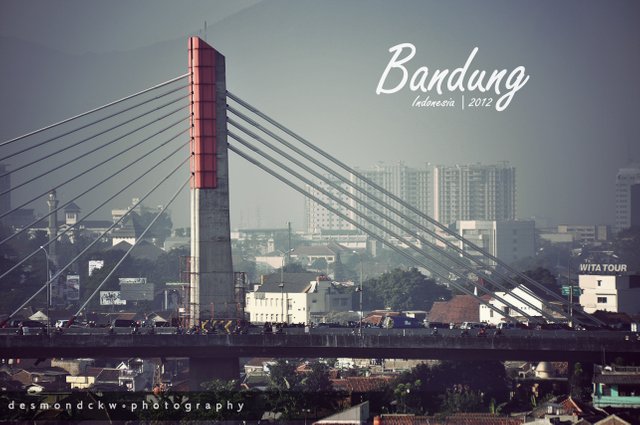




4.Lombok
Long overshadowed by its superstar neighbour across the Lombok Strait there's a steady hum about Lombok that catches the ear of travellers looking for something different from Bali. Blessed with exquisite white-sand beaches, epic surf, a lush forested interior, and hiking trails through tobacco and rice fields, Lombok is fully loaded with equitorial allure. Oh, and you'll probably notice mighty Gunung Rinjani, Indonesia's second-highest volcano, its summit complete with hot springs and a dazzling crater lake.
And there's much more. Lombok's southern coastline is nature on a very grand scale: breathtaking turquoise bays, world-class surf breaks and massive headlands. They keep saying development on these splendid beaches is just around the corner, but until that moment comes, they are easy to explore over much-improved roads.
If you're going to the Gilis, a Lombok stopover is a must. Transport options are good and the mood could not be more laid back.
Lombok and the Gilis
Almost as big as Bali, Lombok is the largely undiscovered island next door. From its volcanic centre to untrodden idyllic beaches such as Mawun, it rewards travellers who want to explore. Many are drawn to mighty Gunung Rinjani, Indonesia's second-highest volcano. Rivers and waterfalls gush down its fissured slopes, while its summit – complete with hot springs and a dazzling crater lake – is the ultimate trekker's prize. The fabled Gili Islands are three exquisite droplets of white sand sprinkled with coconut palms and surrounded by coral reefs teeming with marine life and, on Gili Trawangan, legendary nightlife.
You will enjoy beaches here and sea foods its yummy!!!personally my fav place in Indonesia!!






5.Yogyakarta
If Jakarta is Java’s financial and industrial powerhouse, Yogyakarta is its soul. Central to the island’s artistic and intellectual heritage, Yogyakarta (pronounced ‘Jogjakarta’ and called Yogya or Jogja for short), is where the Javanese language is at its purest, Java’s arts at their brightest and its traditions at their most visible.
Fiercely independent and protective of its customs, and still headed by its sultan, whose kraton remains the hub of traditional life, contemporary Yogya is nevertheless a huge urban centre (the entire metropolitan area is home to over 3.3 million) complete with cybercafes, malls and traffic jams, even as it remains a stronghold of batik, gamelan and ritual.
Put it all together and you have Indonesia's most liveable and lovable city, with countless hotels offering the best value in Java across all price ranges. Its restaurants are tasty and there are cultural attractions everywhere you look within the city and on the outskirts, where you'll find Indonesia’s most important archaeological sites, Borobudur and Prambanan.





6.Surabaya
Your initial impressions are not going to be great. A polluted, congested, business-driven city, Surabaya is not ideal for visitors. Just crossing the eight-lane highways that rampage through the centre is a challenge in itself. Attractions are slim on the ground, and against the calm of rural East Java, it is pandemonium writ large.
And yet if you've the patience to explore, Surabaya has quixotic little corners of interest. Its historic Arab quarter is fascinating: a labyrinthine warren of lanes leading to a historic mosque that’s a place of pilgrimage. Surabaya also has one of Indonesia’s biggest Chinatowns and a roster of impressive, though disintegrating, Dutch buildings.
For most foreign visitors, the city is merely a place to change planes, trains or buses. For locals, however, Surabaya is closely linked to the birth of the Indonesian nation, as it was here that the battle for independence began. To them, Surabaya is Kota Pahlawan (City of Heroes), and statues commemorating independence are scattered all over the city.



7.Ubud
Ubud is culture, yes. It's also home to good restaurants, cafes and streets of shops, many selling goods from the region's artisans. There's somewhere to stay for every budget, and no matter what the price you can enjoy lodgings that reflect the local Zeitgeist: artful, creative and serene.
Ubud's popularity continues to grow, adding on the hoopla created by the bestselling Eat, Pray, Love. Tour buses with day trippers can choke the main streets and cause traffic chaos. Fortunately Ubud adapts and a stroll away from the intersection of Jl Raya Ubud and Monkey Forest Rd, through the nearby verdant rice fields, can quickly make all right with the world.
Spend a few days in Ubud to appreciate it properly. It's one of those places where days can become weeks and weeks become months, as the noticeable expat community demonstrates.
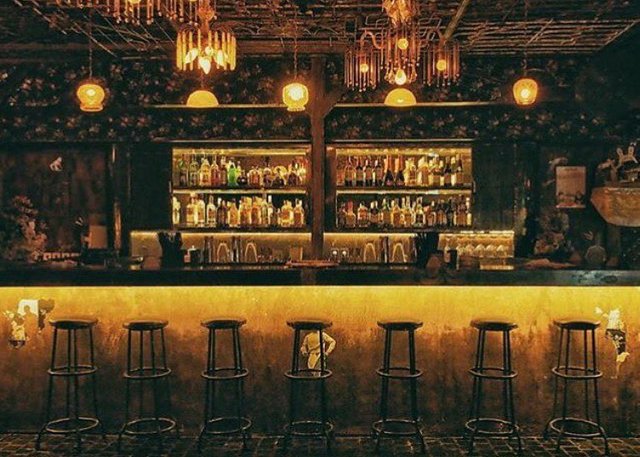





8.Batam
Batam’s golf resorts and casinos attract a weekender contingent both from the city-state and mainland China, while the seedier local bars provide employment for Indonesian women from impoverished parts of Sumatra and ‘happy endings’ for their customers. For travellers, Batam is a soft introduction to Indonesia, a handy transport hub with connections to many different parts of the country. It can also be a sort of purgatory – a cut-rate Singapore with shopping malls but none of the charm – if you’re winding up your stay in Indonesia here before crossing the strait to Singapore.



9.Medan
Sumatra’s major metropolis, and Indonesia’s third-largest city, is seen as a necessary evil by many Sumatra-bound travellers. It’s almost inevitably a place to pass through en route to more exciting destinations and also, for some, a welcome return to the trappings of ‘civilisation’ in the shape of modern malls and restaurants. It’s a brash urban sprawl, chocked by streams of cars and becaks, but it would also be fair to say that this is a city with real Indonesian character. So get over the culture shock, give Medan a bit of time and discover an amenity-filled, modern city with more than a hint of crumbling Dutch-colonial-era charm and a couple of worthwhile museums.



10.Surakarta
Arguably the epicentre of Javanese identity and tradition, Solo is one of the least Westernised cities on the island. An eternal rival to Yogyakarta, this conservative town often plays second fiddle to its more conspicuous neighbour. But with backstreet kampung and elegant kraton, traditional markets and gleaming malls, Solo has more than enough to warrant at least an overnight visit. Two nights is better, and as there are some fascinating temples close by, it also makes a great base for forays into the lush hills of Central Java.
In many ways, Solo is also Java writ small, incorporating its vices and virtues and embodying much of its heritage. On the downside, the island’s notoriously fickle temper tends to flare in Solo first – the city has been the backdrop for some of the worst riots in Java’s recent history. On the upside, the city’s long and distinguished past as a seat of the great Mataram empire means that it competes with Yogyakarta as the hub of Javanese culture.
Solo attracts students and scholars to its music and dance academies, and it's an excellent place to see traditional performing arts, as well as traditional crafts – especially batik, which is a local staple.



12.Komodo
Spectacular Komodo, its steep hillsides jade in the short wet season, frazzled by the sun and winds to a deep rusty red for most of the year, is the largest island in the national park. A succession of eastern peninsulas spread out like so many fingers, fringed in pink sand, thanks to the abundance of red coral offshore. The main camp of Loh Liang and the PHKA office, where boats dock and guided walks and treks start, is on the east coast.
The fishing village of Kampung Komodo is an hour-long walk south of Loh Liang. It’s a friendly stilted Bugis village that’s full of goats, chickens and children. The inhabitants are said to be descendants of convicts exiled to the island in the 19th century by one of the sultans in Sumbawa. The residents here are used to seeing tourists and you can spend a fair bit of time absorbing village life and gazing out over the water.
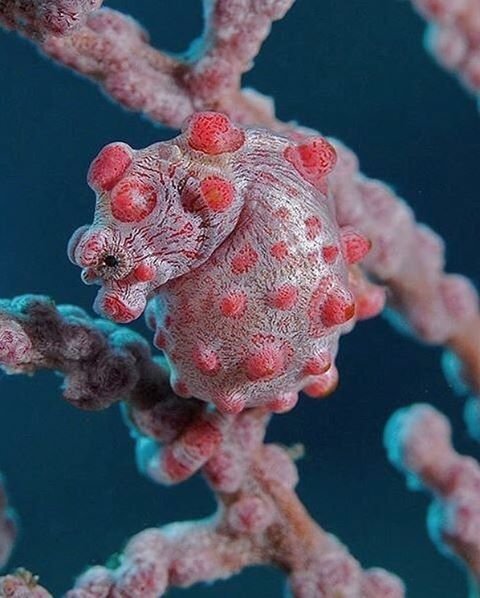


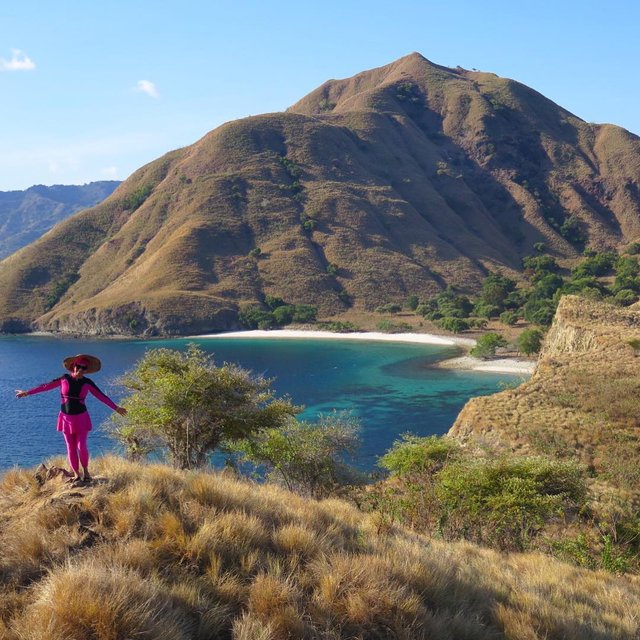


12.Kuta
Imagine a crescent bay, turquoise in the shallows and deep blue further out. It licks a huge, white-sand beach, as wide as a football pitch and framed by headlands. It's deserted, save for a few fishermen, seaweed farmers and their children. Now imagine a coastline of nearly a dozen such bays, all backed by a rugged range of coastal hills spotted with lush patches of banana trees and tobacco fields, and you'll have a notion of Kuta's immediate appeal.
Kuta proper consists of no more than a few hundred houses, a likeable but scruffy-around-the-edges place with a ramshackle market area, and a seafront lined with a non-contigious row of distinctly modest cafes and hotels.
Kuta's original attraction was the limitless world-class breaks within a short ride of town. For now everyone seems to be sitting on their land, but the town's real-estate agents – who are already spearheading increasing villa development – are betting on change real soon. The big boom hasn't happened yet, but you can feel the tension.
Note that the main intersection in town, Jl Pantai Kuta and Jl ke Mawan, is commonly called 'the junction' and is a main point of reference for directions. Some 2km north of the beach on Jl Pantai Kuta is another important junction, where there is a big traffic circle with the optimistically planned four lanes of Jl Raya Bypass.

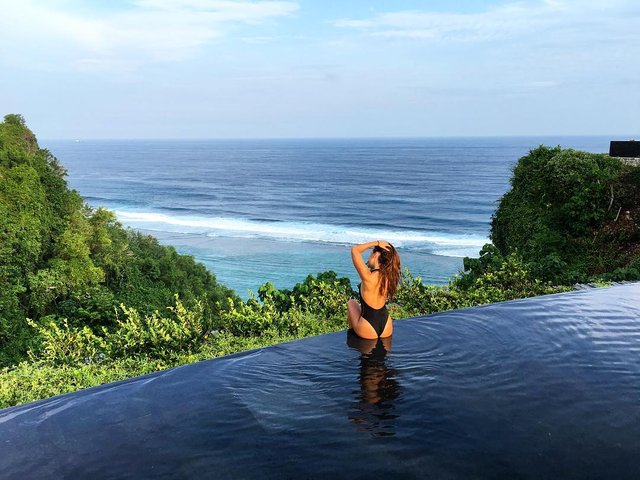



13.Manado
With an overabundance of shopping malls and cavernous holes in the sidewalk, Manado doesn’t usually register as one of North Sulawesi’s highlights. It’s a well-serviced and friendly place, however, with more than its share of comfortable hotels and some good places to eat. Adventures lie nearby around the city at Bunaken, Tomohon, the Lembeh Strait and Tangkoko-Batuangas Dua Saudara Nature Reserve; to get to these places most travellers will have to spend a night or more in Manado.



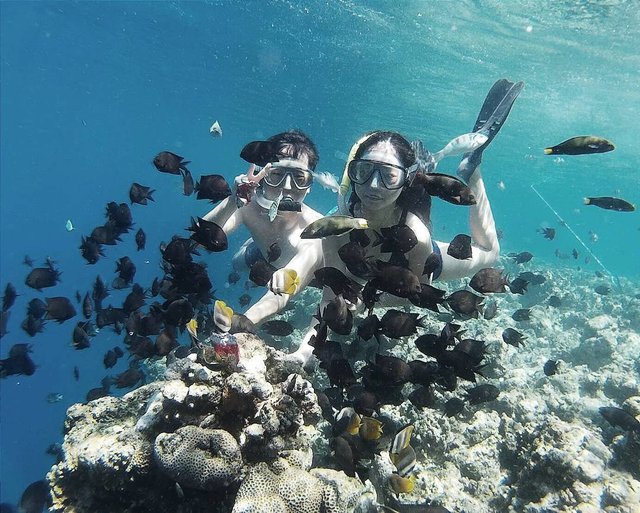

14.Karimun Java
Karimunjawa is a chain of 27 islands north of Semarang, off the coast of Central Java, Indonesia.
Designated as a national marine park. Karimunjawa consists of many small islands, with the two main ones being Karimunjawa island and Kemujan Island, and the smaller ones being Menjangan Besar Island, and Menjangan Kecil Island and some other even smaller, uninhabited islands.
Karimunjawa and Kemujan Islands are like saimese twins. A short bridge connects the two and they may be thought of as just one island.
Karimunjawa Island is the larger and is quite hilly and steep in places. The highest peak is about 330 metres, with a dozen other peaks of 150 metres or more. Karimunjawa also has the larger population. The main, and virtually the only, village is situated on a point on the south-west coast of Karimunjawa Island. There are many beautiful beaches with clean, white sand. Much of the island has fringing reefs.
Kemujan Island has lower evevation and is undulating. The 900 metre airstrip (elev. 10 metres) is located on Kemujan Island, 18 km north-east of the village. There are some mangrove forrests fringing Kemujan Island in places. There are also fringing reefs in many locations around the island.
Karimunjawa and Kemujan Islands are like saimese twins. A short bridge connects the two and they may be thought of as just one island.
Karimunjawa Island is the larger and is quite hilly and steep in places. The highest peak is about 330 metres, with a dozen other peaks of 150 metres or more. Karimunjawa also has the larger population. The main, and virtually the only, village is situated on a point on the south-west coast of Karimunjawa Island. There are many beautiful beaches with clean, white sand. Much of the island has fringing reefs.
Kemujan Island has lower evevation and is undulating. The 900 metre airstrip (elev. 10 metres) is located on Kemujan Island, 18 km north-east of the village. There are some mangrove forrests fringing Kemujan Island in places. There are also fringing reefs in many locations around the island.The smaller, outer islands are low lying and have pristine, white sandy beaches.One can find various kinds of sea animals, like turtles, sharks, and fish, in the sea around Karimunjawa. On the land, especially in Karimunjawa island and Kemujan island, one can find many kinds of birds, deer, and even snakes.Tropical. It is hot here in the dry season (approximately April to October) and wet and humid in the rainy season (December to March).
There are chartered planes from Semarang and Surabaya that fly to the Dewandaru Airport in Kemujan island. The airstrip has a sealed 900 metre runway.
There is a regular ferry, travelling 5 hours from Jepara (Rp 60.000) to the Karimunjawa Island. Be at the port before 6 a.m., as the ferry sometimes departs earlier than scheduled. The ferry departs at 7 a.m, four times a week.
There is also a speedboat, travelling 2 hours from Jepara to Karimunjawa (Express Bahari, Rp 150.000). It departs at 9 a.m., four times a week. In high season it may need to be booked in advance. Go to the office along the street to Jepara port.
All boats are only operational if the waves are none to medium. A prediction can be found online. If the color is red, no boat will depart from either mainland or Karimun.
In Karimunjawa and Kemujan island, you can rent a car, motorcycle or even a bicycle. To get to the other near-by islands however, you need to rent a local boat.
Note: For one or two people, a motorbike would usually do, but if you're not familiar with motorcycles and would rather rent a car, it might be a good idea to book a rental car before you arrive in Karimunjawa, because there are very few cars on the island.




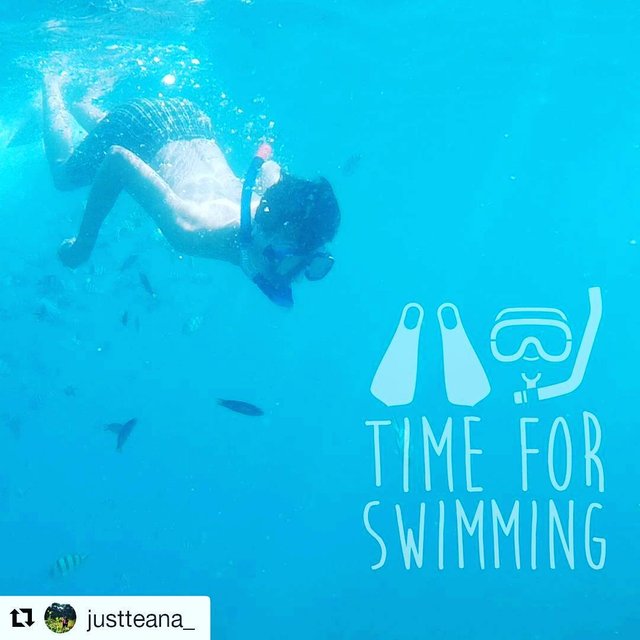
15.Raja Ampat Islands
The sparsely populated Raja Ampat Islands comprise around 1000 islands just off Sorong. With their sublime scenery of steep, jungle-covered islands, scorching white-sand beaches, hidden lagoons, spooky caves, weird mushroom-shaped islets and pellucid luminous turquoise waters, Raja Ampat has to be one of the most beautiful island chains in Southeast Asia.
Pure, unadulterated beauty isn’t just what draws people here, though. Raja Ampat has good birdwatching, with a couple of species of birds of paradise present, and what many call the best diving in the world. Little known until the last few years, Raja Ampat’s diversity of marine life and its huge, largely pristine coral reef systems are a diver’s dream come true – and fantastic for snorkellers too. It’s like swimming in a tropical aquarium. In fact, the waters are so clear and fish so numerous that you hardly even need don a mask. We saw six sharks swimming around below us merely by peering out the window of an overwater hut! So great is the quantity and variety of marine life here that scientists have described Raja Ampat as a biological hotspot and believe that the reef systems here act to restock reefs throughout the South Pacific and Indian Oceans.
The four biggest islands are Waigeo (with the small but fast-growing regional capital, Waisai), Batanta, Salawati and Misool. The Dampier Strait between Waigeo and Batanta has many outstanding dive sites, so most accommodation options are on Waigeo, Batanta or three smaller islands between them: Kri, Gam and Mansuar.

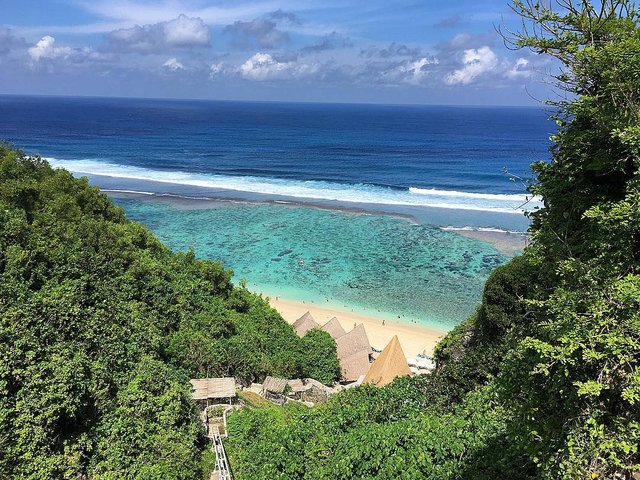
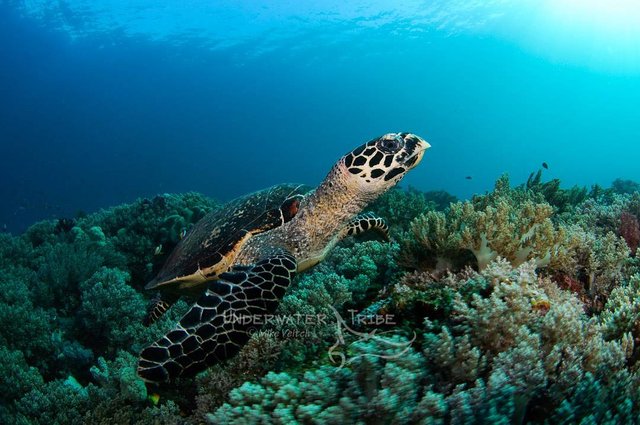


16.Kota Batu
Kota Batu is a city located in East Java Province of Indonesia. It is situated about 20 km to the northwest of Malang. Formerly, it was a part of Malang Regency; but in 2001, Batu became an independent city legalized by Act No. 11 of 2001, when it became an independent municipal city with its own mayor and council.
A population of 190,000 people, it lies on the southern slopes of Gunung Welirang. Its population largely consists of Javanese. The town used to be a recreation place for the Dutch colonial officers in the Dutch colonial area (before 1945). Batu means rock in Indonesian
Its not so much good place to visit but if you are around you can visit batu you will have great time here.


17.Padang
Small in size but not in perfection, Padang Padang Beach is a cute little cove. It is near Jl Labuan Sait where a small river flows into the sea. Parking is easy and it is a short walk through a temple and down a well-paved trail where you'll be hit up for bananas by monkeys. There are patches of shade near the sand plus a couple of simple warungs. You can rent surfboards to hit the breaks right offshore. It can get very crowded in high season.
If you're feeling adventurous, you can enjoy a much longer stretch of nearly deserted white sand that begins on the west side of the river. Ask locals how to get there or take the precipitous stairs by Thomas Homestay.
A metered taxi from Kuta will cost about 150,000Rp and take at least an hour, depending on traffic.



18.Magelang
Magelang serves as a launching point for visits to the sacred 8th-century Borobudur Buddhist temple and has a rich history as a military post. This city in Central Java enjoys a scenic location between the Progo and Elo rivers, located 40 kilometres northwest of Yogyakarta and 75 kilometres south of the Central Javan capital Semarang. Magelang is a pleasant place to explore with a number of historical sites from the Dutch colonial era to see, including the Drinking Water Tower that still stands in the centre of town.
The earliest known record of Magelang dates back to the year 907, when it was established as a village under the Mataram Kingdom. Magelang was an important military base during Indonesia's independence movement against the Dutch government, and it remains an important army training centre with both the National Military Academy and the military school, Taruna Nusantara, located here. Pangeran Diponegoro, the region's most famed resistance leader and prince of the Mataram Dynasty, is memorialised in a museum and a statue that stands in the town square.
While it does not attract nearly as many people as the better-known Yogyakarta, Magelang's lively Chinatown, busy markets, green parks and surrounding landscape of lush hills, hot springs and volcanoes make it a varied and interesting place to visit. Terrific views of Mount Sumbing can be seen from many points across the city.



19.Lake Toba
Danau Toba has been part of traveller folklore for decades. This grand ocean-blue lake, found high up among Sumatra’s volcanic peaks, is where the amiable Christian Batak people reside. The secret of this almost mythical place was opened up to travellers by the intrepid, and Tuk Tuk – the village on the lake’s inner island – is still one of the undisputed highlights of Sumatra.
Danau Toba is the largest lake in Southeast Asia, covering a massive 1707 sq km. In the middle of this huge expanse is Pulau Samosir, a wedge-shaped island almost as big as Singapore that was created by an eruption between 30,000 and 75,000 years ago. In fact, Samosir isn’t actually an island at all. It’s linked to the mainland by a narrow isthmus at the town of Pangururan – and then cut again by a canal.
Directly facing Parapat is another peninsula occupied by the village of Tuk Tuk, which has Samosir’s greatest concentration of tourist facilities. Tomok, a few kilometres south of Tuk Tuk, is the main village on the east coast of the island.



20.Denpasar
Sprawling, hectic and ever-growing, Bali's capital has been the focus of a lot of the island's growth and wealth over the last five decades. It can seem a daunting and chaotic place but spend a little time on its tree-lined streets in the relatively affluent government and business district of Renon and you'll discover a more genteel side.
Denpasar might not be a tropical paradise, but it's as much a part of 'the real Bali' as the rice paddies and clifftop temples. This is the hub of the island for 800,000 locals and here you will find their shopping malls and parks. Most enticing, however, is the growing range of authentic and tasty restaurants and cafes aimed at the burgeoning middle class. You'll also want to sample Denpasar's markets, its important museum and its purely modern Balinese vibe.
Most visitors stay in the tourist towns of the south and visit Denpasar as a day trip (if traffic is kind you can get here in 15 minutes from Sanur and 30 minutes from Seminyak).




21.Lembang
Lembang is a town and administrative district of West Bandung Regency in the province of West Java on Java, Indonesia. The town has about 17,000 inhabitants (at census 2010). The population of the Lembang District was 173,350 at the 2010 Census.
Lembang is situated between 1,312 and 2,084 meters above sea level. Its highest point is on top of Tangkuban Perahu Mt. The temperature usually ranges between 17 and 24 degrees Celsius.
Lembang means "dent" in Indonesian.




22.Palembang
Palembang is the second-largest city on Sumatra island after Medan and the capital city of the South Sumatraprovince in Indonesia. It is one of the oldest cities in the Malay Archipelago and Southeast Asia. Palembang is located on the Musi River banks on the east coast of southern Sumatra, with a land area of 369.22. square kilometres and a population of 1,708,413 people (2014). Palembang is the sixth-largest city in Indonesia afterJakarta, Surabaya, Bandung, Medan and Semarang. Its built-up (or metro) area with Talang Kelapa and Rambutan was home to 1,620,429 inhabitants at the 2010 census.
It’s a good place to enjoy foods and shopping
Not too much siting attractions but great in food





23.Komodo National Park
Declared one of the New Seven Wonders (www.n7w.com) of nature, this national park, established in 1980, encompasses Komodo, Rinca, several neighbouring islands, and the rich marine ecosystem within its 1817 sq km.
A three-day visitor permit includes your park entrance fee (50,000Rp) and the conservation fee (20,000Rp), collected on arrival by rangers. Camera (50,000Rp), video camera (150,000Rp), snorkelling (60,000Rp) and diving (75,000Rp) taxes apply, as well. All fees are good for three days.
A short, guided dragon-spotting trek is included with your entrance fee. For a longer, hour-long trek on Rinca you’ll pay an additional 50,000Rp. On Komodo, where the hiking is superb, you can pay from 50,000Rp to 250,000Rp for guided treks that range from flat 3km strolls to steep 10km hikes over peaks and into deep valleys. Arrange your trek upon registration in Komodo. All guides speak some English and are very knowledgeable about the islands’ flora and fauna.


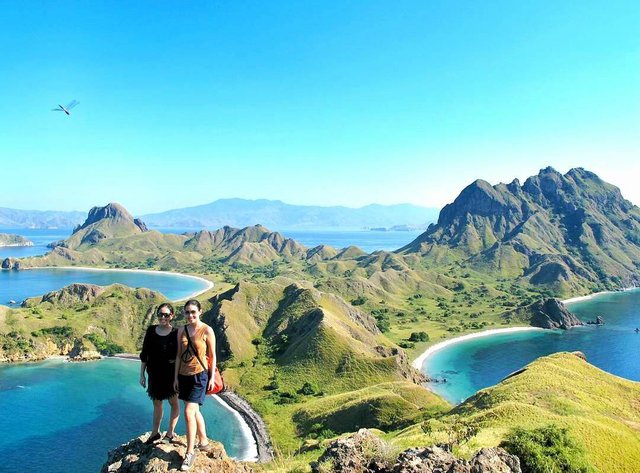

AND yes One and Only KOMODO DRAGONS ONLY ON EARTH
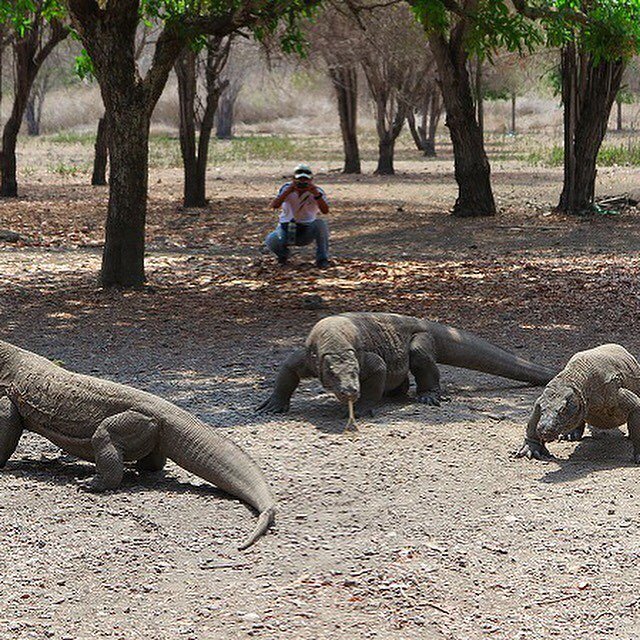


24.Belitung
Belitung is an Indonesian island east of Sumatra. Its main island's beaches, including Tanjung Tinggi and Tanjung Kelayang, are known for their rounded granite boulders, fine sand and calm waters. The island’s largest town, Tanjung Pandan, features Dutch colonial architecture and a colorful harbor. Pulau Lengkuas, one of many small offshore islands, has a 19th-century lighthouse and snorkeling among its coral reefs.




25.Bunaken
This tiny, coral-fringed isle is North Sulawesi’s top tourist destination, yet it has managed to maintain a rootsy island soul. Tourist accommodation is spread out along two beaches. Other than that, the island belongs to the islanders; these friendly folk have a seemingly endless reserve of authentically warm smiles. There are no hassles here, just laid-back beachy bliss.
Most people come to Bunaken for the diving. The marine biodiversity is extraordinary, with more than 300 types of coral and 3000 species of fish, abundant sponges and phenomenally colourful life on vertical walls. The 808-hectare island is part of the 75,265-hectare Bunaken Manado Tua Marine National Park (Taman Laut Bunaken Manado Tua), which includes Manado Tua (Old Manado), the dormant volcano that can be seen from Manado and climbed in about four hours; Nain and Mantehage islands; and Pulau Siladen, which also has accommodation options.
With the developing and expanding city of Manado right next door, Bunaken is becoming more and more accessible. Within two hours of arriving in Manado from Singapore or most parts of Indonesia, you can be in a bamboo beach shack on Bunaken watching the sunset. Unfortunately, this proximity also means that the huge amounts of garbage generated by the city can sweep onto Pantai Liang, turning the picturesque tropical beach into a refuse heap. The scarcity of fresh water has limited the island’s development, and villagers must import their drinking water from Manado.
Prices (from accommodation to beer) are higher than in mainland Sulawesi and some resorts discriminate against nondivers, either by charging higher accommodation prices or by turning them away.



26.Gili Islands
Picture three miniscule desert islands, fringed by white-sand beaches and coconut palms, sitting in a turquoise sea: the Gilis are a vision of paradise. These islets have exploded in popularity, and are booming like nowhere else in Indonesia – speedboats now zip visitors direct from Bali and a hip new hotel opens practically every month.
It's not hard to understand the Gilis' unique appeal, for a serenity endures (no motorbikes or dogs!) and a green consciousness is growing. Development has been more tasteful than rapacious and there are few concrete eyesores.
Each island has its own special character. Trawangan (universally known as Gili T) is by far the most cosmopolitan, its bar and party scene vibrant, its accommodation and restaurants close to definitive tropical chic. Gili Air has the strongest local character, but also a perfect mix of buzz and languor. Gili Meno is simply a desert-island getaway.


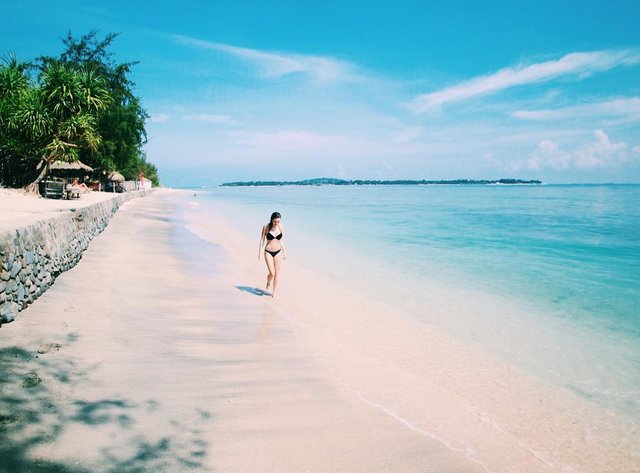

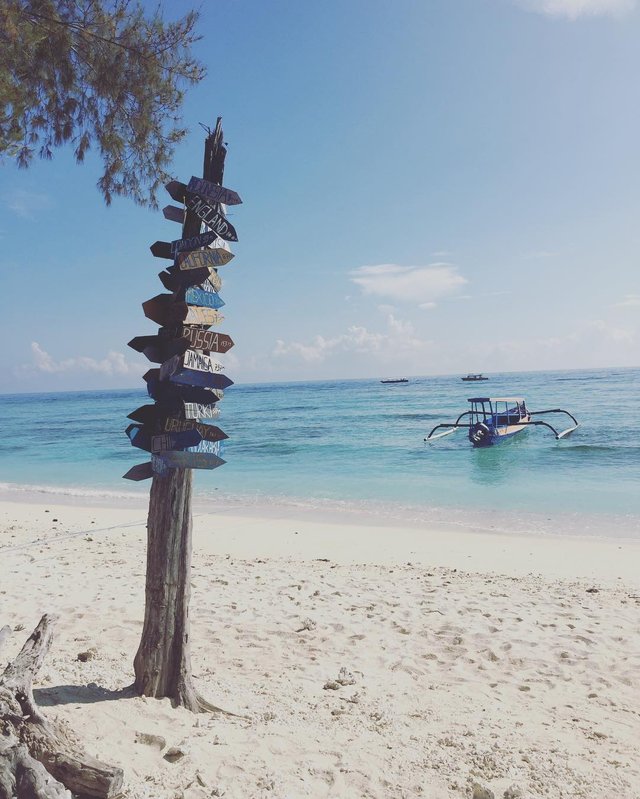

27.Sabang
The island’s main township is a mix of traditional fishing village and old colonial-era villas. During Dutch rule, Sabang was a major coal and water depot for steamships. The town enjoyed a brief revival in the 1970s as a duty-free port, but is now a sleepy town whose inhabitants either fish or make rattan furniture.
If staying on the Sabang side of the island, visitors make a beeline for the beautiful Sumur Tiga beach, 5km east of town.


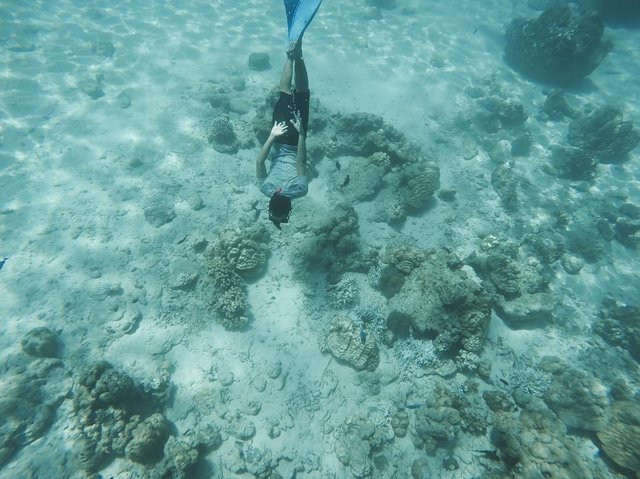


28.Krakatoa
The legendary peak of Krakatau, the most famous of the world’s famous volcanoes, is a name almost everyone knows – but few actually know of its location (take the film makers of Krakatoa, East of Java, for instance). Resting in relative peace some 50km from the West Java coast and 40km from Sumatra, the volcano is nowadays a shadow of its former self – a small group of disconnected islands centred on Anak Krakatau (Child of Krakatau), a volcanic mass that has been on the boil since 1928.
The highlight of any trip to Krakatau is rounding Pulau Rakata and first glimpsing the menacing peak of Krakatau’s child.





29.Bondowoso Regency
Bondowoso, suspended between the highlands of Tengger and Ijen, is the gateway to Bromo and Ijen and home to some of the island’s best tape, a tasty, sweet-and-sour snack made from boiled and fermented vegetable roots. Mainly a transit and market town, tours to Ijen can be organised here.
Tape tastes vaguely alcoholic and can be found on Jl PB Sudirman, where dozens of shops sell it by the basket (15,000Rp). The ‘321’ brand is reportedly the best.
There are many (cramped) minibuses to Ijen (35,000Rp), all leaving before noon for the 2½-hour trip. Other destinations from Bondowoso include Jember (10,000Rp, 45 minutes), Probolinggo (20,000Rp to 30,000Rp, two hours) and Surabaya (normal/air-con 40,000/55,0000Rp, five hours).

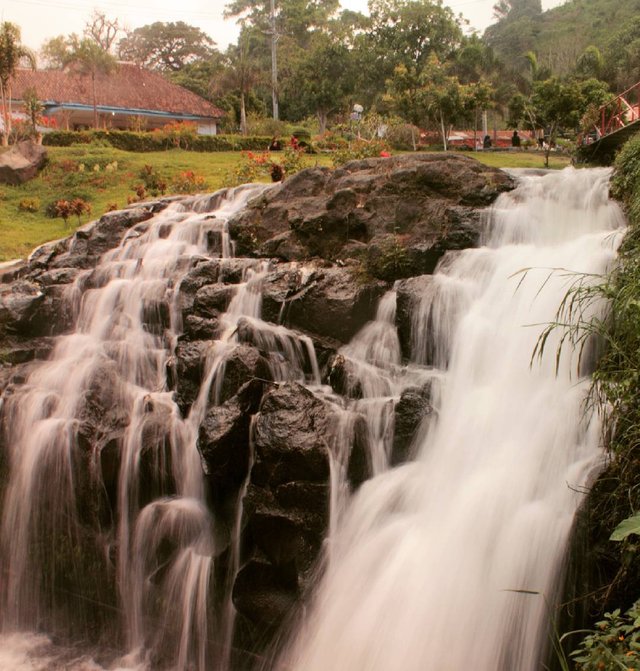



30.Ambon,Maluku
Maluku’s most prominent island is lush and gently mountainous, indented with two great hoops of bay. Around capital Kota Ambon, villages merge into a long, green, suburban ribbon. West of the airport, this gives way to a string of charming coastal villages where, if you take the time to explore, you'll discover Ambon is not just an unavoidable step on the road to the lovely Lease, Kei and Banda Islands. In fact it's a significant underwater mecca: the bay is known for excellent muck-diving, while the southern coast has clear waters and intact coral.
The more developed southern part of Ambon is called Leitimur. It's joined to the northern Leihitu part by a narrow neck of land at Passo.





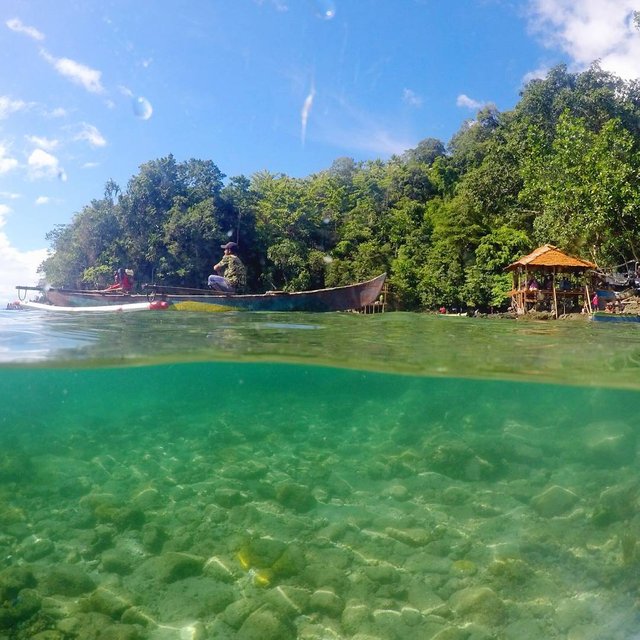
31.Tanjung Putting National Park
Tanjung Puting is the most popular tourist destination in Kalimantan, and for good reasons. A near guarantee you'll see free-roaming orangutans, combined with a storybook journey up a winding jungle river, accessed by direct flights toSurabaya and Jakarta, give this adventure world-class appeal.
Tanjung Puting was initially set aside as a wildlife preserve by the Dutch in 1939. It gained park status and its international reputation largely thanks to Dr Biruté Galdikas, one of Leakey's Angels – the trio of female primatologists, including Dian Fossey and Jane Goodall, trained by Louis Leakey. Working from Camp Leakey since 1971, Galdikas has made such seminal discoveries as the great ape's eight-year birth cycle, which makes the species highly vulnerable to extinction. Her controversial hands-on approach to orangutan care may have lost her some supporters in the academic and conservation communities, but there is no denying the impact she has had on our understanding and appreciation of these amazing creatures and the threats they face.
The park is best seen from a klotok, a two-storey romantic live-aboard boat that travels up Sungai Sekonyer to Camp Leakey. During the day you lounge on deck surveying the jungle with binoculars in one hand and a drink in the other as the boat chugs along its narrowing channel. Watch for the quick flash of the colorful kingfisher, and scan the shallows for the toothy false gharail as your cook serves up fantastic meals. In the evening, you can spot proboscis monkeys bedding down in the treetops with the river at their backs for protection. These curious golden-haired, round-bellied, bulbous-nosed primates are found only on Borneo and are sometimes called monyet belanda (Dutch monkey – for some reason…) At night, you tie up on the river, set mattresses and mosquito nets on deck, and enjoy the finest sleep, while the hum of the rainforest purifies your ears.
Klotok call at several stations where rangers stack piles of bananas and buckets of milk to feed the resident population of ex-captive and semiwild orangutans. There are no fences or cages, but you'll be kept at a distance by ropes: a boundary ignored by the animals themselves who often wander nonchalantly through the shutter-snapping crowd on their way to lunch. While some orangutans appear deceptively tame, do not attempt to touch or feed them, and do not get between a mother and child. Orangutans are several times more powerful than you, and may bite if provoked.
Visitation has increased rapidly in recent years. There are now over 60 klotok running nearly nonstop during the busy dry season (June through September), with no plans by the park to limit the impact. Toilets flush directly into the creek, a questionable practice anywhere, but even more concerning given the high traffic. Some klotok are now outfitted with freshwater tanks, which they fill in town for showers and dish washing – a wise addition.
Despite the visitor numbers, the trip is still a fine introduction to the rainforest, and one of the most memorable experiences you'll have on the island. The park's 200 varieties of wild orchid bloom mainly from January to March, although the abundance of March fruit may lure orangutans away from feeding platforms. At any time, bring rain protection and insect repellent.






Beautiful Images of Indonesia




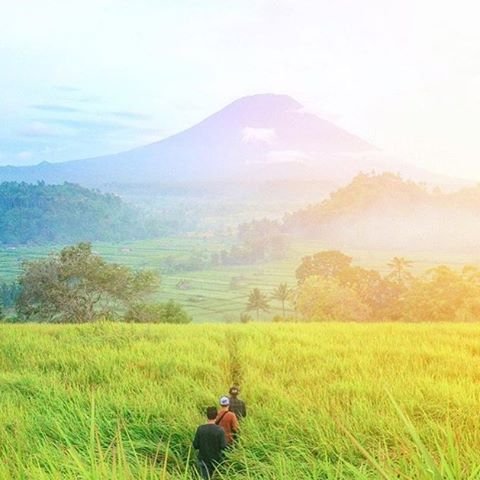











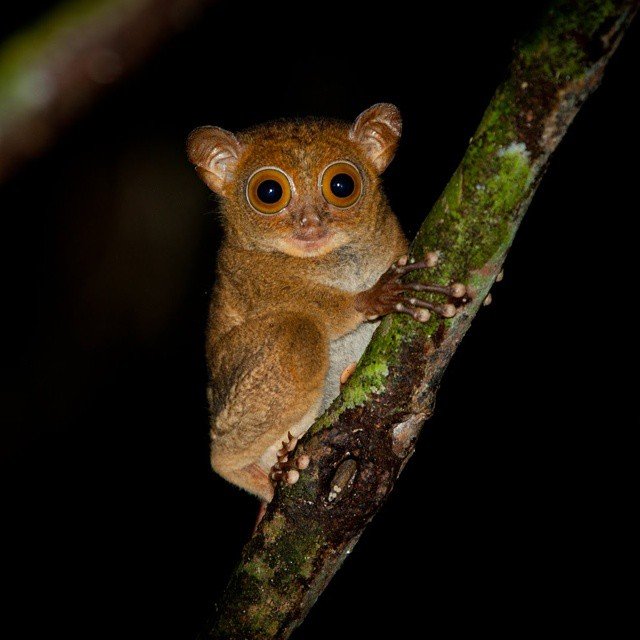


Indonesia is reach in wildlife resources you will enjoy watching animals in forest over there
I can not mention all attraction but you wont be disappointed visiting there its best place to travel for marine life lovers and animal lovers and yummy seafood to catch your tongue.
In Indonesia you will joy of forests ,animals,scuba,marinelife,seafood and yes shopping of handicrafts and leather products
Please Donate if you like my Blog: Steem:
Ethereum:0xeb0B933aa6873B8e823f43D6d46baeaE198fc9c2
BITCOIN: 1DjYsRA1L8YZXCCYX6hNpaX5eZBdJ535N7
Please follow for next post and future attraction will write about another heavenly place on Earth in Asia
See you Soon
Follow, Comment,Like my blog posts on STEEM

Beach or Pool? Tough choice!!! :-)
Great post!
Downvoting a post can decrease pending rewards and make it less visible. Common reasons:
Submit
thanks for your positive comment :)
Downvoting a post can decrease pending rewards and make it less visible. Common reasons:
Submit
amazing
Downvoting a post can decrease pending rewards and make it less visible. Common reasons:
Submit
thank you for appriciating and yes its a best place to visit follow my blog for more catching posts
Downvoting a post can decrease pending rewards and make it less visible. Common reasons:
Submit
Places of dreaming. Beautiful mountains, Temples and ocean!
Downvoting a post can decrease pending rewards and make it less visible. Common reasons:
Submit
yes nice place to visit
Downvoting a post can decrease pending rewards and make it less visible. Common reasons:
Submit
Thank you.... My girl n I TODAY were trying to decide if n when we can go somewhere next where would it be... No question.... Hands down ... Bali. We said how we need to get dialed in to the spots to go. Who needs Lonley planet.... We've got @pavaya66 ...... Your pics are off the charts ... I think each is worth more then a thousand words here. Thank you for the tips and eye candy......Follow me as I've got travel in my blood. I need it.... Literally. I'll be sharing my travels as well. I'm still getting acquainted with how Steem wors... When I do, short on funds myself or not, I promise I will throw some Steem your way. Trust me, I know the NEED to travel. As you'll see why over time. Thanks again. Safe travels to ya..... Live the life you love Love the life you live.
Downvoting a post can decrease pending rewards and make it less visible. Common reasons:
Submit
Thank you so much for your great response please follow for next posts about great places to visit . thanks in advance
Downvoting a post can decrease pending rewards and make it less visible. Common reasons:
Submit
Ya.....really should go for it...my friend said can spend a month there but still can finish explore the island....
Downvoting a post can decrease pending rewards and make it less visible. Common reasons:
Submit
yes its best place buddy :)
Downvoting a post can decrease pending rewards and make it less visible. Common reasons:
Submit
Seems to be plagiarised based on http://smallseotools.com/plagiarism-checker/. Hope I'm wrong....
Downvoting a post can decrease pending rewards and make it less visible. Common reasons:
Submit
what if both writers are same and yes First sentence is as UNIT act same on too many website because people accepted that sentence for this place they know this place by same ,,by d way working at lonelyplanet.com we have own traveling website you can take look my friend
Downvoting a post can decrease pending rewards and make it less visible. Common reasons:
Submit
Sick! I am going soon. Just what I needed.
Downvoting a post can decrease pending rewards and make it less visible. Common reasons:
Submit
Nice post but I would recommend using some titles in your text illustrator. Having headers and sub headings is one of the keys to having a good post and something that is easy to read. Good spacing and not to long a paragraph as well helps people read easier.
Downvoting a post can decrease pending rewards and make it less visible. Common reasons:
Submit